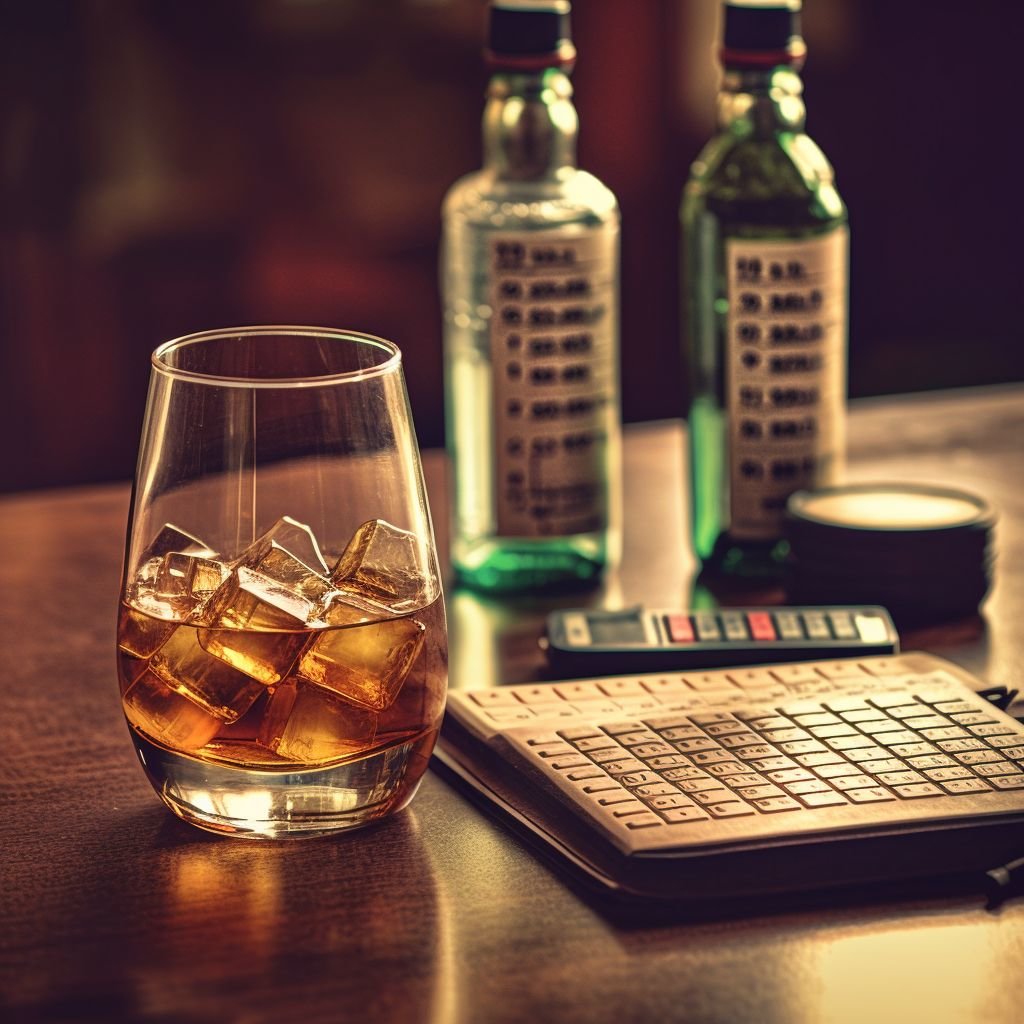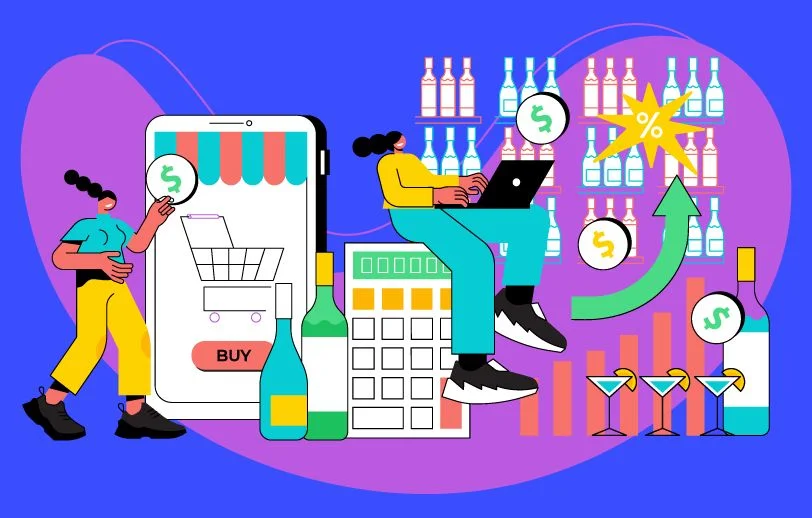Managing a successful restaurant involves a keen eye for detail, especially when it comes to controlling your expenses. Among the various restaurant costs, liquor cost stands out as a critical factor that can significantly influence your bottom line. Liquor costs the average restaurant between 18%-24% of its budget. That's a sizable chunk!
In this blog post, we’ll show you how to calculate liquor costs in your restaurant and go over different strategies you can use to lower liquor costs and optimize your profit margins.

Calculating liquor cost and liquor cost percentage
Liquor cost is the price you pay for the alcohol served at your restaurant, also known as the cost of goods sold (COGS). Knowing your liquor cost is one of the crucial restaurant metrics you need to track to make sure your business stays profitable.
You can calculate your restaurant’s liquor cost by adding up your beginning inventory for a specific period and any additional inventory purchases you made during that period, and then subtracting your ending inventory from this number.
Here’s the liquor cost formula:
Liquor cost = Beginning inventory + Purchases - Ending Inventory

Liquor cost percentage (also known as pour cost), on the other hand, is the ratio of liquor costs compared to liquor sales. You can calculate your restaurant’s liquor cost percentage by using the following formula:
Liquor cost percentage = (Beginning inventory + Purchases - Ending inventory) / Total sales

The average pour cost percentage is considered to be between 18% to 24%. If your liquor cost percentage is higher than this, you should try to reduce your liquor costs by using the strategies covered in the next section.
4 Ways To Lower Liquor Costs
Imagine pouring your heart into every cocktail, only to find that your liquor costs are silently draining your restaurant or bar's profits. With strategic planning, you can significantly reduce your liquor expenses.
Here are several effective strategies to help you reduce liquor expenses without compromising on quality or customer satisfaction.

1. Negotiate pricing with suppliers
One of the best ways to reduce liquor costs is to negotiate better pricing with suppliers. Here are a few strategies you can use to increase your chances of negotiating a better price for your liquor purchases:
- Prepare a liquor sales forecast – A liquor sales forecast is a necessity for being able to negotiate pricing with a distributor. When preparing your sales forecast, make sure to include a breakdown of forecasted alcohol sales by drink category.
- Bring quotes with you – Before you attempt to negotiate, collect quotes from different suppliers. This will allow you to show that you can get a better price elsewhere unless you’re given a discount.
- Set up long-term contracts – Don’t shy away from setting up long-term contracts with suppliers. Agreeing to these types of contracts can often help you secure a better price on liquor.
2. Practice theft prevention
Bar theft can increase your restaurant’s liquor costs significantly. Bars might see up to a 20 percent loss in their inventory due to giving away free drinks and overpouring.
Restaurant and bar managers can use these tactics to reduce bar theft:
- Perform weekly inventory checks – Performing weekly bar inventory checks will help you keep an eye on inventory variance levels and allow you to spot any unusual drops in liquor stock levels. Download our free weekly restaurant inventory sheet.
- Implement a zero-tolerance policy for theft – Let your staff know how much bar theft can cost the restaurant and explain that any instance of theft will result in termination.
- Install security cameras - Security cameras can help you notice any shady behavior. Also, simply knowing that there are cameras at the bar will make it less likely that people will steal.
3. Try to reduce waste
On average, bars experience a loss of about 6 ounces for every liter of liquor due to spillages and over-pouring. This significant amount highlights the need for meticulous pouring practices and effective training for staff to minimize waste and ensure profitability.
Here are a few things you can try:
- Track spills – Start by keeping track of liquor spillage to get a better understanding of how much spills are costing you.
- Educate your staff – Educate your staff on how wasting liquor impacts the restaurant’s bottom line. Teach bartenders proper pouring technique to reduce liquor shrinkage.
- Use jiggers and precision pour spouts – Using specialized bar tools, such as jiggers and precision pour spouts, can help eliminate overpouring completely.
4. Standardize your drink recipes
Making sure all your bartenders follow the same recipes when preparing drinks is crucial for controlling liquor costs. It ensures consistency in both the cost and the quality of the drinks.
You’ll want to create recipes that outline the exact amount of ingredients used for each drink and explain to your bartenders the importance of following the recipes closely.
To create a drink recipe, you’ll need:
- The exact quantity of each ingredient used (liquor, mixers, garnish etc.)
- The glass size
- Instructions for making the drink
You’ll also want to revise your recipes every six months or so.
FAQs
What is a good beer cost percentage?
An ideal beverage cost falls within the range of approximately 18-20%. This percentage breakdown is as follows: 20% for beer, 14% for liquor, and 22% for wine. On average, bars maintain a pour cost of around 18% across all beverage types, while the target baseline for beverage costs usually stands at 20%.
How to calculate liquor cost per bottle?
Liquor Cost per Bottle = Cost of Liquor Bottle / Number of Bottles
For example, if a bottle of liquor costs $40 and there are 12 bottles in a case, the liquor cost per bottle would be:
Liquor Cost per Bottle = $40 / 12 = $3.33 per bottle
This formula helps you determine the average cost of the liquor in each individual bottle, which can be useful for inventory management, pricing calculations, and assessing profitability.
How to calculate liquor cost per drink?
The formula to calculate the liquor cost per drink involves two main variables: the cost of the liquor per unit and the amount of liquor used in a single drink.
Liquor Cost per Drink = Cost of Liquor per Unit × Amount of Liquor Used in a Drink
For example, if the cost of the liquor per ounce is $0.75 and a drink requires 2 ounces of that liquor:
Liquor Cost per Drink = $0.75/ounce × 2 ounces = $1.50 per drink
This formula helps you determine the direct cost associated with the liquor portion of each drink, which is crucial for pricing decisions and calculating profit margins.
How to calculate pour cost?
The pour cost is a measure of the relationship between the cost of the ingredients in a drink and its selling price. It's expressed as a percentage and helps determine how much of the revenue from a drink covers its ingredient costs. The formula for calculating pour cost is:
Pour Cost = (Total Cost of Ingredients per Drink / Selling Price per Drink) × 100
For example, if the total cost of ingredients for a drink is $3.00 and the selling price is $10.00:
Pour Cost = ($3.00 / $10.00) × 100 = 30%
This means that 30% of the selling price covers the cost of ingredients, and the remaining 70% represents the potential profit from the drink.
The pour cost percentage can vary depending on your pricing strategy, desired profit margins, and market conditions. It's an essential metric for managing costs and ensuring your drink pricing is competitive and profitable.
How to calculate drink price?
The formula to calculate the drink price involves considering the total cost of ingredients per drink and factoring in the desired profit margin as a percentage of the cost. Here's the formula:
Drink Price = Total Cost of Ingredients per Drink / (1 - Desired Profit Margin Percentage)
For example, if the total cost of ingredients for a drink is $5.00 and you want a 20% profit margin:
Drink Price = $5.00 / (1 - 0.20) = $5.00 / 0.80 = $6.25
So, the drink price would need to be set at $6.25 to achieve a 20% profit margin based on the $5.00 cost of ingredients.
Remember that the desired profit margin should reflect your business goals, market conditions, and competitive pricing. This formula allows you to calculate a selling price that covers your costs and provides the desired level of profit per drink.
What is a good beverage cost percentage?
Typically, bars and restaurants aim for a pour cost ranging from 18% to 24%. On average, a bar's pour cost is around 20%, which means that for every dollar earned from beverage sales, the business incurs a cost of 20 cents.

Boris Mustapic is a content marketer with a decade of experience in the digital marketing industry. He specializes in helping B2B SaaS companies drive growth through strategic, product-led content marketing.
More about the author